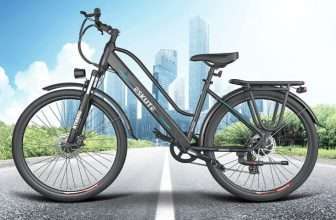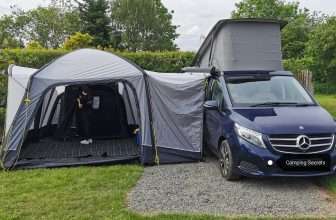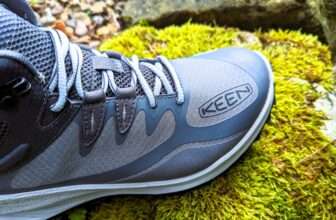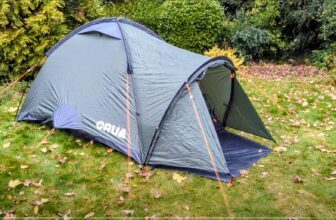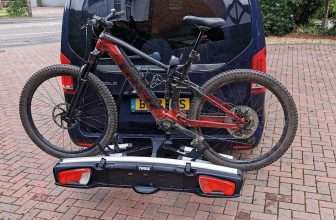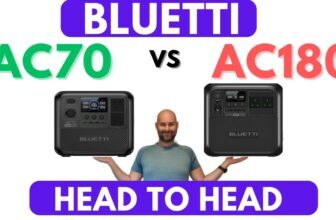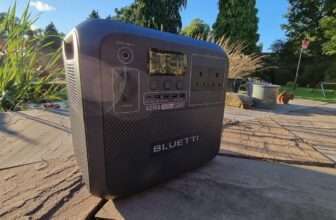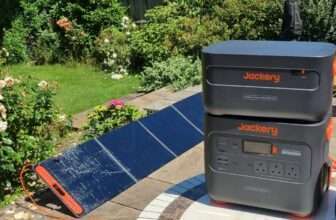LFP vs NMC Battery Technology – which is best for camping power packs?
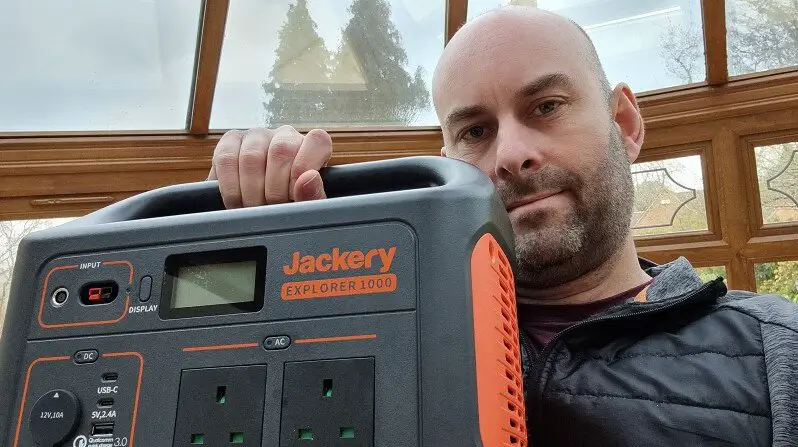
Contents
ToggleIntro
LiFePO4 and Li-NMC are types of lithium-ion battery technology which are widely used in many forms of modern tools, vehicles and appliances. This is due to the high energy density and long cycle life of lithium batteries in general. In most cases when you buy a product which includes a lithium battery, you simply won’t have to bother about what technology has been included – it is of no relevance and does not affect performance.
However, in the world of lithium battery power packs, the argument of LFP vs NMC battery technology is a debate which rages on internet forums and social media around the world. In this article, we’ll discuss the main pros and cons of each technology, and give our verdict on the one to choose for camping applications.
LFP vs NMC – the Tech
Li-NMC overview
Li-NMC stands for lithium nickel manganese cobalt oxide. It is the battery technology used in standard lithium-ion batteries which are known primarily for their high energy density and acceptably long cycle life. Please note the words ‘high’ and ‘acceptably’ here because they are of key importance. Nickel and manganese in the chemistry of Li-NMC make the compound stable, and cobalt imbues it with extremely high energy per unit of mass. This makes Li-NMC batteries a good choice for products like electric vehicles, which need a lot of power and a high energy density for a long range.
 The high energy density of NMC technology is also very useful for camping power packs where space is limited. You want to be able to store as much energy in as small a space as possible, and for that application NMC is currently the best option available.
The high energy density of NMC technology is also very useful for camping power packs where space is limited. You want to be able to store as much energy in as small a space as possible, and for that application NMC is currently the best option available.
For Li-NMC power packs, Jackery are probably the top supplier on the market at the time of writing. Check out our in-depth reviews of the 2000 Pro, the Explorer 1000 and the Explorer 500.
LFP Overview
LiFePO4 stands for lithium iron phosphate, a type of lithium-ion battery known for being safe and lasting a long time. The iron in the cathode crystal makes it stable, and the phosphate offers chemical stability and hence less risk of fire at high temperatures. Because of this, LiFePO4 batteries work well in energy storage systems where safety and long cycle life are important and the energy storage system is being charged and discharged almost continuously – this may be in the home or as part of the National Grid for example.
We have no doubt that the increased lifetime and safety of LiFePO4 (LFP) technology is useful for pure battery storage systems as described above. However, a camping power pack is not the same. A camping power pack will not be used continuously unless you are literally living on the road with solar panels trickle charging your batteries – if this is the case for you, then we would definitely recommend using LFP technology.
However, for most camping applications you will be taking a portable power station to a campsite to use for a few days and potentially up to a few weeks at a time. When you get home, you may not even use the power station – why would you if you have a mains supply to use? In this case, the increased lifetime of the LFP technology makes less sense – we’ll look at the numbers below to highlight this.
There is no doubt that more manufacturers are moving to LFP technology. Some of the top companies using LFP are Bluetti, EcoFlow and Anker.
LFP vs NMC – Volume and Weight Comparison
As an example, let’s take a comparison of the size and weight of a portable power station from Jackery and Bluetti having the same storage.
The Jackery 2000 Pro has 2160Wh of storage and uses Li-NMC battery technology and can output up to 2200W of AC or DC power – we were very impressed with the performance during our testing.
The Bluetti AC200Max in contrast uses LiFePO4 battery technology and has 2048Wh of storage and can output 2200W of AC or DC power. Very similar headline figures.
These are big power stations, and will show the most discrepancy between NMC and LFP. However, you should clearly be able to see that the Bluetti AC200Max is about 9kg heavier than the Jackery 2000 Pro and yet the Jackery stores more power (2160Wh vs 2048Wh). The Jackery also fits it in a considerably smaller-sized case at 31763cm3 volume vs 45452cm3 for the LFP in the Bluetti product.
In our view, for camping applications this is a no-brainer. The NMC technology wins handsomely in terms of space and weight for the same amount of power storage.

Safety Considerations – LFP vs NMC
Much is made of the reduced probability of fire and thermal runaway with LFP compared to NMC batteries, and this again is a true statement. LiFePO4 is a more stable crystal and does not create additional heat when punctured or on fire. However, in modern NMC battery packs from companies such as Jackery the risk of fire is negligible. Jackery include specific chips for thermal management which accurately monitor on board temperature and cut power generation as soon as anything untoward can be detected.
Of course, safety is a major concern, and we would always recommend storing any battery station in an insulated garden shed or garage away from your house in case of accident. That being said, in our opinion if you are using a power pack occasionally for camping and not keeping it permanently on mains charge then the risk of fire is low from both battery types. For us, this is not a major reason to choose LFP over NMC.
Product Lifetime – Charge/Discharge Cycles of LFP vs NMC
For some people, this is the make or break argument. LFP batteries can withstand more charges and discharges before the capacity capability of the power pack is eroded. The normal measure of this is how many charge/discharges the power pack can withstand before the capacity is reduced to 80% of its original level.
Let’s look at the Jackery 2000 Pro (NMC) against the Bluetti AC200Max again.
- Jackery 2000 Pro (NMC) – 1000 cycles before capacity is reduced from 2160Wh–>1728Wh
- Bluetti AC200Max (LFP) – 3500 cycles before capacity is reduced from 2048Wh–>1638Wh
On the surface, this looks like a clear win for the LiFePO4 (LFP) technology, but is it? Let’s look at how a typical camper would be using a power station. A really keen camping family may use the power station every week say on average, so 52 times a year. Throw in a few mid-week power cuts at home, and some solar charging and you may reach 60 times a year. So how does this look for our power packs in terms of years use?
Jackery 2000 Pro (NMC) – 16.5 years of use before capacity is reduced from 2160Wh–>1728Wh
Bluetti AC200Max (LFP) – 58 years of use before capacity is reduced from 2048Wh–>1638Wh
Clearly the LFP technology here allows much longer battery life, but that is not the camping argument. The NMC technology still has more than enough lifetime for camping trips – you could use the Jackery 2000 Pro for 60 days a year with full charging and decharging, and after 16.5 years you’d still have 80% capacity in its storage ability. It would still have 1728Wh of battery storage after 16.5 years of use. I don’t know about you, but if someone could guarantee me that performance about any appliance for sale I’d be happy.
The upshot is that if you’re looking for a portable power station to hand down to the next generation as an heirloom over 100 years or so (I’m being sarcastic here) then you may want to go for LFP technology due to its superior lifetime. However, if you’re campers then this is not really relevant.
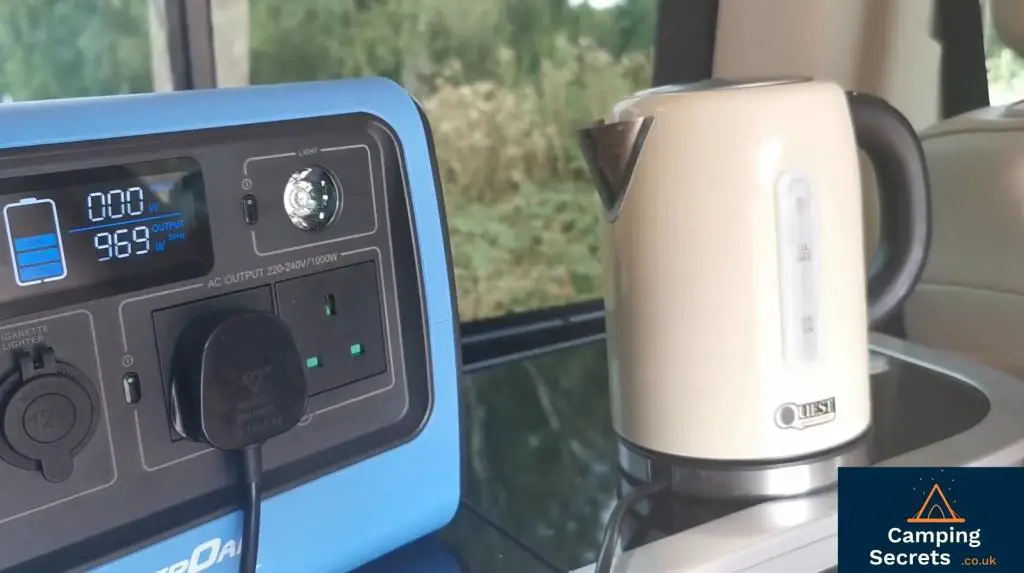
LFP vs NMC batteries – Price
In truth, there is not much difference in the price for a fixed capacity using either NMC or LFP. For example, EcoFlow made the Delta 1300 power station with NMC batteries and their follow-up Delta 2 Power station with LFP. They both retail for around the £1000 mark.
Yes, there is a difference in price between manufacturers because different brands tend to add more or markup to their products if they consider themselves ‘thought leaders’ or ‘trendsetters’. This is why Apple products are always more expensive than the Android equivalent. In the power pack world, Jackery are often more expensive than other manufacturers for the same reason. However, you don’t have to buy from Jackery if you want an NMC pack. We quite like the products from AllPowers which are much lower priced for the same power. However, do bare in mind that Jackery offer a great warranty and those onboard safety chips for their NMC packs – you get what you pay for!
Summary
In conclusion, Li-NMC and LiFePO4 are both lithium-ion batteries but have different pros and cons. Li-NMC batteries have a high energy density and work well for camping applications because they can store the same amount of power as LiFePO4 batteries, but in a much smaller size and weight package.
LiFePO4 batteries on the other hand can withstand more charge/discharge cycles and have less risk of fire. This is very useful for ‘always on’ battery storage schemes for the house or national grid, but is of less importance for a portable camping power pack. If you are only using the power pack for weekly camping trips then the reduced size and weight of NMC batteries makes them the clear choice over LFP, because the advantages of LFP just aren’t so relevant.
Please note that this is just our opinion and we have nothing against LFP. In fact, some of our favourite power stations use LFP. It’s just that when you do the direct comparison of products like the Jackery 2000 Pro vs Bluetti AC200Max then it becomes ever so clear.
Thanks for reading!




